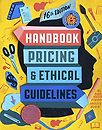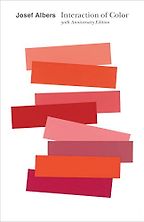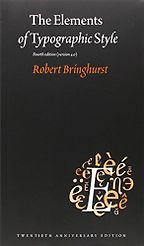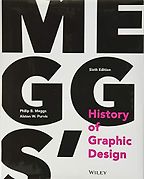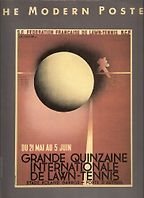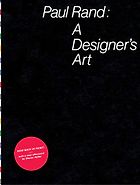Before we start talking about your selection of books for graphic designers, let me ask you: What is graphic design?
Graphic design is solving problems. Most design is. The kind of problems that graphic designers solve, and the thing that differentiates us from other forms of design, is that we typically design to solve communications problems. That would include advertising and marketing, as well as book design, which has been my main focus for the past 25 years. Any field where a visual solution to a communication problem is required.
Of course, a book has both aspects of marketing and content—above the cover, obviously, which is really just a marketing poster when it comes down to it. And then you have the book itself, which is a much more complex series of storytelling engagements. But graphic design extends to newsletters, websites or even packaging. At a foundational level, it’s communication. How best to communicate, what you’re communicating and who you’re communicating to. The medium in which you are communicating is also key. There may be specifics for a particular service sub-genre, but every design project will on some level be about solving the problem of communication.
You’ve got the coolest job. Between book design, planning, strategy… so many interesting dilemmas to solve on behalf of your clients. Let me ask you, how does The Graphic Artists’ Guild Handbook fit into your work?
I cannot take responsibility for writing that book, but I did have a hand in designing it. I’m the publisher at The Graphic Artists Guild, which has been producing an edition of the Handbook for nearly 50 years. The latest represents the 17th edition. And I can tell you what the book does, the problems that it solves, even if I don’t believe any of the original authors are even with us any longer. The Handbook confronts the challenges of being a graphic artist—that includes illustrators and typographers, fabric designers and others, it’s a broad swathe. We are all graphic artists. As a graphic artist, you’re not necessarily ever trained to be a business person. And many graphic artists, at some point in their lives, find themselves becoming entrepreneurs, be that having a side hustle to augment their salary or starting a legit full-time business. The Handbook offers tools for all the various forms of graphic arts and provides instructions on how to create a business, how to stay in business, how to interact with businesses as a client or service provider, and pricing. At the end of the day, pricing is the thing that keeps us all up at night. Did I charge enough? Did I charge too much? How am I going to make a living?
Get the weekly Five Books newsletter
So at heart, the basis for the Handbook is a highly practical approach to the real-world challenges of being a design professional. Every three to five years, we produce new editions to keep it very much up to date. It features offer documents, contracts and all sorts of pragmatic elements that you might need as a small business owner to engage with your client, with your own contractors and vendors. We break out the different graphic arts, give an overview of the sector and discuss the state of the industry right now, including commercial considerations like market conditions. In this 16th edition we just added a new section where we talk very discreetly about running a business and how to maximise your income, and how to take care of your business. Finally, another thing that the Guild is very concerned with are issues of copyright, for illustrators especially. There’s a lot of information provided on retention of rights and licensing and related information, which may be specific to certain areas of the graphic arts, but definitely very important.
That it’s called a ‘guild’ takes me back to bookbinders, typesetters, and the medieval craft guilds of yore. Several of the books you selected discuss this historic dimension, but before we get on to that I want to start with colour. Let’s speak about the first of the books for graphic designers on your list, Interaction of Color.
Josef Albers’ Interaction of Color was newly released by Yale University Press to mark the 50th anniversary of the original publication. It is a truly beautiful book. As a book designer, I absolutely get suckered into the the beauty of a book. Mind you, I didn’t have this particular edition when I was in art school, when I was first introduced to Josef and Anni Albers. The colour exercises inside the book take me back to my student days, only they have been redone for this edition—really beautifully! This is foundational colour theory such as I studied when I was at Parsons School of Design and I love it so much. It just makes me happy.
“What differentiates us from other forms of design is that we typically design to solve communications problems”
Colour is one of those things which can be incredibly trendy. It can get highjacked by trends. Certain palettes come and go with the fashion, Pantone has the ‘colour of the year’, fashion designers talk about which is the ‘in colour’ for the season. Sometimes when you look at pictures of yourself from a long time ago, the two things that likely stand out are your hair, and the colours that you were wearing at the time. What I love about Albers is that his theories are not trendy. They are scientifically grounded, and often mind-blowing, as the examples in the book illustrate. Adjacent colours, though identical, can appear very differently to the eye due to their placement.
We’re often unaware of the way that colours are playing on our moods or our reception of information that’s being conveyed. It seems almost like a kind of an unspoken universal language that we all share, even if colours can have different significations at different times in different cultures.
In my previous position at Oxford University Press, I had a staff of 45 designers and art directors. I’ve been managing designers for a really long time. Sometimes I had to have ‘that conversation’ with them—that graphic design is not a fine art. It’s a craft, it’s a trade, it’s a skill. Hence we have The Graphic Artists Guild, and not, for example, a salon. What differentiates graphic design from fine art is that you have to solve a problem and you have to solve it for a particular audience, or indeed almost always for at least two audiences. One is the audience of the deciders, the gatekeepers or the people who hired you. In addition though, you need to communicate effectively with the ultimate audience who they gatekeepers want to reach, right? This is where theory can be inordinately helpful. Albers does not follow trends. We designers often hear things from our audience such as ‘I don’t like the colour yellow’. You hear that a lot when you work as a book designer. With this book I’m able to tell the client, very objectively, well, this is how the colour yellow solves your specific communication problem. I appreciate that as a tool in my toolkit.
Like you, I’m also a sucker for beautiful books. Another of the books for graphic designers that’s beautiful both in its prose and formatting is The Elements of Typographic Style. We’ve interviewed typographers at Five Books before; Bringhurst however is a poet by training. In addition to being highly technical, it is highly readable. In fact, it’s quite lyrical in places.
I’m actually typesetting a book of poetry right now. And I’m reminded of the very specific technical requirements of poetry as opposed to nonfiction prose. What would otherwise be minor considerations of point size or text width, rules about spaces above and below, indents. All of these loom large. If you are typesetting prose, the copy is not too threatening. Essentially it’s just running in a continuous flow. Poetry? Every single line has a meaning and how you break those lines up is deeply significant. Whether you continue on to a new page, or if you break a line or a stanza visually. Placement on the page is endowing incremental meaning to those breaks.
“In poetry, every single line has a meaning and how you break those lines up is deeply significant”
I would think that Robert Bringhurst came to typography perhaps even out of frustration with the typesetting of his own work. In 2018 I had the absolute honour of being a juror with him for the Association of University Presses book show. That was intimidating, let me tell you! Bringhurst is an acknowledged master of typographic design, and his book is regarded like a Bible in the trade. We went through the mountains of books you are asked to review, we each had our coloured post-its marking those volumes that we each thought deserved further conversation, ending up with a nicely sized pile of books that we both agreed on. Of course, we also had our distinct piles. To actually have the gumption to say, ‘hey, Robert, did you notice this cute little thing on this book?’ was really quite audacious of me. I think I managed to sway him on one or two, and he had absolutely noticed things that I had not noticed on other books. An amazing experience.
His book, The Elements of Typographic Style is simply stunning in the way that it illustrates the concepts of typography that it describes. That itself seems to me to be the most perfect form of graphic design, right there. The book is executing as it explains, and illustrating as it describes. It’s both beautiful and aspirational for a designer to consider. And as you say, so beautifully written that it’s almost like a meditation. For certain it is one of those books that you can just open to a spread before you, read it and then pause to consider.
The line that stays stayed with me is: “Typography exists to honour content”. The spaces that are left unprinted convey as much or sometimes more meaning than the actual typeset pages. Perhaps you consider books like these part of a definitive reference library for Guild members? Certainly books for graphic designers like our next title, Meggs’ History of Graphic Design are almost encyclopaedic, ranging from a discussion of the caves in Lascaux right up to our digital age. This feels like another keystone text for anybody investigating graphic design.
It is. I was lucky enough to have a history of graphic design class when I was studying. it’s always been one of my favourite classes. More than any other book that I had in school, I returned to the Meggs’ time and time again. My original, earlier edition copy is now pretty dog-eared. This new edition is a splendid update.
“Turning its pages was a liberating way to break through the designer’s block that happens when you’re young and still relatively inexperienced”
I will say that it is not all encompassing. It’s got a very Eurocentric perspective. It could be expanded to to embrace the great breadth of diversity of culture, I am aware of that. Nonetheless, the scope is breathtaking. It shows examples starting with cave painting in Lascaux and the earliest glyphs and following cuneiform all the way through illustrated manuscripts and books in our day. This volume is a very cohesive argument about the continuities and changes that design has undergone throughout history. The chosen examples are so beautiful in the edition that I have now, published by Wiley, in dazzling colour whereas my school copy contained merely a few colour inserts. It’s quite amazing to see these pieces rendered in colour.
Anyone who worked with me early on knew that I always had this book on my desk, riffing on it as much as I could. It always presented an opportunity to play with important concepts. I would just flip through if I found myself struggling with a design problem. Turning its pages was a liberating way to break through the designer’s block that happens when you’re young and still relatively inexperienced. Simply to start thinking within someone else’s framework is always liberating, for me, at least. I credit this book for a lot of my early success. I’m grateful to Meggs for writing it.
That’s a terrific recommendation for anybody who may be embarking on a design career, or for whom design is integral to the work they do. In your opinion, as a practitioner, as we move ever more into digital technology as a means of conveying graphic information, does that also make us more aware of graphic cultures beyond Anglo-Saxon or Eurocentric circles?
The internet makes everybody your neighbour. You can communicate with anyone, Zoom with anyone from anywhere, do a co-working session with and collaborate across time zones. I would hope that this is absolutely one of the great benefits of digital communication.
I like very much the fact that Meggs looks at developments in photography in talking about the evolution of graphic arts, or the influence of modernist painting, for example, which we’ve discussed elsewhere on the site at Five Books. Paul Rand was a kind of evangelical modernist. But let’s talk about A Designer’s Art. When people think about modernism, painting may spring to mind but I would say that they are at least as likely to think about modernist design. Some of Rand’s iconic designs—IBM, I ♥ NY—are ones that even the uninitiated would instantly recognise. Was Rand a touch point for the graphic design that came after modernism?
Absolutely. His approach to branding, publication design and advertising was so innovative. Rand really saw so much opportunity for novelty, and always added a sense of playfulness to his work. At least his best work. I don’t think his Enron logo was particularly playful, but maybe in designing it so severely he was prescient in some way? I always appreciated that playfulness of his and I interpret it almost as a humanism, a sense of love and respect for his audience. With his designs, we’re all in on the joke. This is an ad, right? His best work has great aesthetic qualities, but he makes sure that we all know exactly what it’s for.
We’re trying to sell you stuff.
Exactly. As an American designer he did so much to establish the credibility of the craft in America. His work paved the way and helped to elevate our standing as American designers. A Designer’s Art is also much more than just a design manual. It has a lot to say about art and visual appreciation more generally, with chapter titles like ‘arts for art’s sake’, ‘imagination and the image’, ‘the politics of design’. Politics is something that often seems to be quite closely intermeshed with the way that graphic messages are conveyed.
Which brings us to your final selection of books for graphic designers, The Modern Poster. The original catalog from a landmark show at MoMA, this book features hundreds of posters, on everything from propaganda and politics, ads, concerts, exhibitions and popular gatherings. Another beautiful book, so I can see how it really it fits the mould. You’ve chosen some some very handsome volumes for us to talk about today. But why single out the poster specifically as a vehicle for conveying information?
I put together a group of books that a graphic designer could have on hand that would help them be inspired and also help them see how a range of people solve different problems and communicate different ideas. The poster similar to the book cover, which is really like a poster in the function it performs. It’s in some ways the ideal or aspirational product for a designer. I can only speak for myself—there are doubtless designers who prefer doing other sorts of work—but with poster design you have space to work with, you have colour, often not a lot of copy, and often there’s a very clear message that it is required to convey. For an event there may be important practical information that needs to be listed, but whatever the mandate, it is reductive and it’s an open-ended project. Just look at the variety of posters represented here. You can see that there are no limits. Whether you are designing a brand or a website or a brochure, I think that there’s much to be learned by looking at these examples of exquisite design, just to get your creative juices flowing.
“When you’re talking to your client, really listen”
At the end of the day, I appreciate well-written books about design, but for me, the visuals are key. Often I really just want to be able to look at some pictures, study the visuals, because I’m thinking of a problem that needs to be solved in a visual way. I don’t often want to get ‘trapped’ in words. Anyone who’s worked with a creative brief understands that people can come up with all sorts of solutions to a communication problem that sound logical and completely appropriate in writing. The minute you start designing a visual solution, however, you realise that the written version simply makes no sense. It doesn’t do the job it was written to do. I did try to provide books that if you wanted to, you could just flip through, and nonetheless learn so much if you do. By all means read, but first and foremost appreciate – take in the visual messages.
When I started working in advertising and before I went into publishing, I was a cigarette smoker. That’s what designers did back way back then….
True to advertising form, then, like Mad Men!
Me and Don Draper! When I felt creatively blocked I would go to have a cigarette outside—even then you were not allowed to smoke in the office. I’d bring one of these books with me and I’d sit in the stairwell of my building (which you weren’t supposed to smoke in either, as it happens). I would just sit in the stairwell with one of these books smoking, and I rarely got past half the cigarette. It was a combination of being outside of the studio environment and being by myself, but also looking at these images. And maybe a little bit of the nicotine. That combination was powerful, oh my goodness. I’d be stubbing out my cigarette to run back to the desk, because I’ve got work to do at the drafting table, and an idea to get it done!
What would be your word of advice for aspiring graphic artists today? Aside from taking up smoking….
Smoking aside, I think it’s really important to listen. When you’re talking to your client and trying to gather the specifications for whatever project you are working on, really listen. Always observe. Keep up with what’s happening in the museums and movies and TV and music—and food, even. Know what’s going on in your culture. Then absolutely take time. Don’t expect it to happen all at once. Give yourself a few moments of mindfulness in the process to let the universe download some great ideas to use.
Five Books aims to keep its book recommendations and interviews up to date. If you are the interviewee and would like to update your choice of books (or even just what you say about them) please email us at [email protected]
Five Books interviews are expensive to produce. If you've enjoyed this interview, please support us by donating a small amount.

